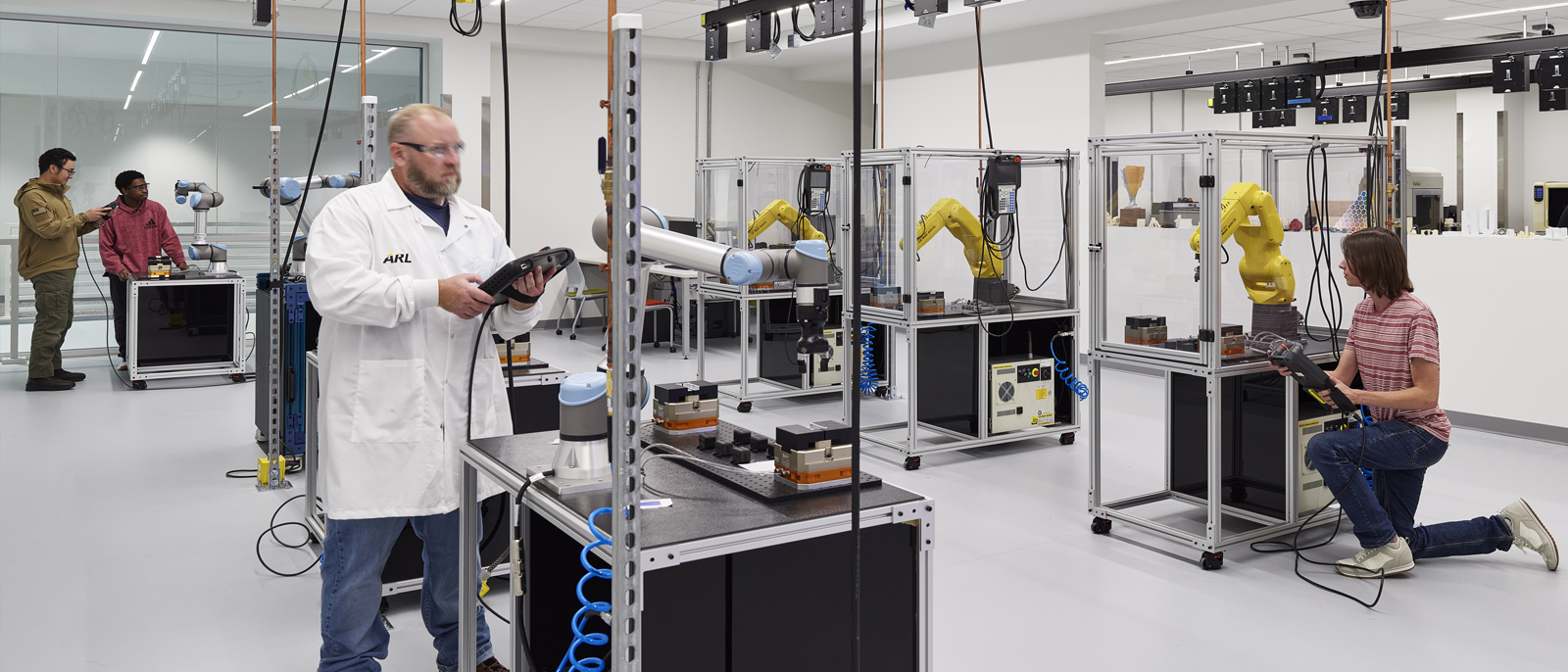Harrisburg University of Science and Technology is pleased to announce that its Center for Advanced Manufacturing and Materials, better known as STORMWERX, has been awarded a portion of a $1.2 million sustainability-focused project grant.
The award represents a collaboration between the National Center for Defense Manufacturing and Machining (NCDMM) and the National Additive Manufacturing Innovation Institute, better known as America Makes. The award represents the latest step in an ongoing project called EARTH (Environmental Additive Research for Tomorrow’s Habitat), which is funded by the Office of the Under Secretary of Defense, Research and Engineering Manufacturing Technology Office (OSD(R&E)) and the Air Force Research Laboratory (AFRL).
The primary contractor for the project is IC3D, with which Harrisburg University has long enjoyed a fruitful partnership. Joining as other partners on the project are Ohio State University and 3Degrees.
HU is advancing the EARTH project’s goals in three ways:
- To advance the capabilities of 3D printing by improving material-testing processes and supporting printer-profile development.
- To print and iterate on approved parts selected by DEVCOM (US Army Combat Capabilities Development Command) representatives.
- To print parts for the US Army that will receive active testing in military vehicles.
The broader goal of EARTH is to research more sustainable materials and methods for use in 3D printing (additive manufacturing). In this case, STORMWERX and the other stakeholders are seeking reliable ways to recycle PET plastic (polyethylene terephthalate) and then use it as raw material in 3D printers. EARTH seeks solutions to longstanding challenges in human exploration and construction, including printing livable habitats for Lunar bases and designing resilient methods for human habitation beneath the surface of the ocean.
LJ Holmes is the Executive Director for STORMWERX and serves as the co-program manager for the Center for Advanced Manufacturing and Materials at Harrisburg University. “If we’re able to recycle PET, then HU’s team will need to figure out how to print it, and how to dial in the printer parameters, like path orientation, temperature, and feed rate,” Holmes said. “PET makes up a large portion of what we see in the Pacific Garbage Patch. Because it’s a difficult material to recycle, there are limited use cases currently. If we can recycle and 3D print with it, there’s already a substantial amount of that material available on Earth – and out at sea – that we can work from and lessen our reliance on fossil-fuel products.”
This sustainability project award will help HU’s STORMWERX team continue to push the boundaries of what’s possible in material reclamation, additive manufacturing, and waste repurposing. The funding awarded through the EARTH program will help the team identify scalable methods for capturing, reusing, and 3D printing new products using plastic waste – particularly polyethylene terephthalate.
The ongoing collaboration between STORMWERX, America Makes, the DoD, IC3D, and other stakeholders seeks to address longstanding challenges in reusing high-performance polymers to meet humanity’s material needs. Additive manufacturing is frequently more sustainable than molding, milling, and machining. Combining 3D printers with more effective material reclamation methods could have far-reaching impacts. For example:
- Reclaiming plastics for 3D printing could help meet the material needs of local communities while reducing the plastic waste already present in bodies of water or landfills.
- PET and similar plastics are commonly found in packaging for military-grade products. Ideally, military bases would be able to capture their plastic waste and responsibly reuse it using 3D printers, rather than burning it or placing it in a landfill.
- In cases where people lose their homes and material possessions to storms, flooding, and other natural disasters, it may soon be possible to rapidly manufacture housing components and other life-supporting products, using the resilient polymers already present in the region.
The typical manufacturing process involves large amounts of fossil fuel-derived materials and then vehicular transportation of finished goods to end-users. The ability to locally recapture waste plastic and use 3D printers to efficiently meet those needs will greatly reduce the footprints of the logistics, manufacturing, and transportation processes humans currently depend on to meet their material needs.
Harrisburg University would like to thank IC3D for its ongoing partnerships with both the HU ADMA bachelor’s program and its corresponding research arm in STORMWERX. This sustainability project award is the latest development – and far from the last – in what has been a consequential and mutually beneficial relationship that directly supports various research and defense initiatives.
